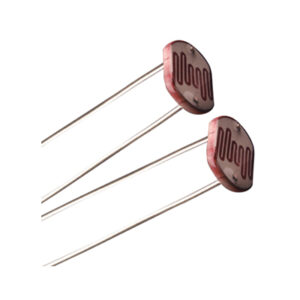When we work on a circuit or device we would want to set the frequency according to the device that is being operated or we would want to optimize the clock speed and configuration settings according to the type of processor mounted. A single switch cannot be used where multiple numbers of switches are involved in output generation. Therefore a switch with a number of positions will be suitable to get the changes done. We use a DIP Slide Switch to configure these devices.
Introduction to DIP Switches
DIP switch can be defined as an array of simple two terminal On-Off electromechanical switches (Single Pole Single Throw) that are commonly used in electricity operations. The word “DIP” is an acronym for Dual In-line Package which means that the electrical contacts are in two rows with a series of slide switches. It also refers to each individual switch or the unit as a whole.

simple switches by permitting multiple choices that result in different electrical signals from the switch, versus a simple “on” or “off” position.
But what is a SPST switch?
A Single Pole Single Throw toggle switch connects or disconnects one terminal either to or from another. This means that it controls one wire (pole) and it makes 1 connection (a throw). It is an on/off switch, but a ‘throw’ only counts when a connection is made. ‘Off’ is not considered a ‘throw’. It is the simplest switch.
Figure 2 shows a Light Switch circuit with a SPST switch to control the flow of current to light. When the SPST switch acts as a “closed state” or “throw” state, the supply is given to the light to blink. But when the SPST switch is in the “open state”, the flow of supply is blocked and the light does not blink.

We’ll see the working of a DIP Slide Switch for this blog now,
Working Principle of a DIP Slide Switch
It has an array of sliding contacts, which can be either on or off. This allows each switch to select a one-bit binary value. The values of all switches in the package can also be interpreted as one number. Eight switches offer 256 combinations, which is equivalent to one byte.
This type of switch is designed to be used on a printed circuit board along with other electronic components and is commonly used to customize the behavior of an electronic device for specific situations. DIP switches are an alternative to jumper blocks. Their main advantages are that they are quicker to change. It can hold configurations and select the Interrupt Request (IRQ).
The DIP switch package also has mounting leads to provide an electrical path from the switch contacts to the Printed Circuit Board (PCB). DIP switches works only when the device is powered on. They are used in PCB for mother board, expansion cards and used in remote controls to prevent interference
An Example of how a DIP Slide Switch works?
Here below in figure 3 to 6, we can see a simulation of a DIP Slide Switch done in the Proteus tool. In figure 3, the DIP Slide Switch is in the OFF position in all the 8 switches and hence none of the LED blinks.

In figure 4, the DIP Slide Switch is in a position where the first 4 switches are in ON state while the other 4 are in OFF state. Hence first 4 LED’s blink while the other 4 does not blink.

In figure 5, the DIP Slide Switch is in a position where the first 4 switches are in OFF state while the other 4 are in ON state. Hence first 4 LED’s does not blink while the other 4 blinks.

In figure 6, the DIP Slide Switch is in the ON position in all the 8 switches and hence all the LED blinks.

Thank you for reading this blog,
For more information about the product please visit:
http://www.tenettech.com/product/1344/dip-switch-8-position
For more information about different products please visit: http://www.tenettech.com/category/1/products
For technical queries please drop an e-mail: info@tenettech.com






